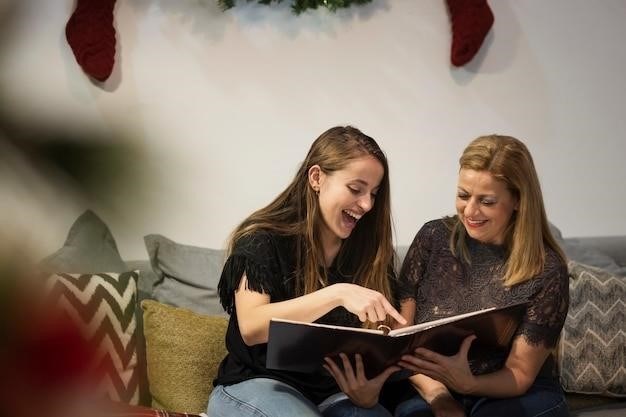
A Good Girls Guide to Murder Series⁚ Book 2 Overview
Good Girl, Bad Blood, the second book in Holly Jackson’s thrilling series, follows Pip Fitz-Amobi as she tackles a new mystery⁚ the disappearance of Jamie Reynolds․ This sequel maintains the captivating blend of mystery, suspense, and true-crime elements that defined the first book, while deepening character development and plot complexity․
Plot Summary of Good Girl, Bad Blood
In Good Girl, Bad Blood, Pip Fitz-Amobi, having seemingly put her detective days behind her, finds herself unexpectedly thrust back into the world of investigation․ Jamie Reynolds, the older brother of a classmate, vanishes without a trace, leaving behind a trail of unanswered questions and unsettling secrets․ Unlike the first book’s focus on a solved murder, this installment presents a missing person case, forcing Pip to navigate a more ambiguous and complex situation․ The police dismiss Jamie’s disappearance as a runaway case, but Pip’s instincts tell her otherwise․
Driven by her unwavering determination, Pip embarks on a new investigation, utilizing her podcasting skills and sharp observational abilities to uncover clues․ She delves deeper into the lives of those connected to Jamie, unearthing hidden connections and long-buried resentments․ As the mystery unfolds, Pip faces greater risks and challenges than before, confronting not only the truth behind Jamie’s disappearance but also her own evolving relationship with Ravi Singh and her place in the community of Little Kilton․ The narrative skillfully builds suspense, revealing shocking twists and turns that keep readers engaged until the very end․
Main Characters and Their Development in Book 2
Pip Fitz-Amobi, the central protagonist, experiences significant character development in Good Girl, Bad Blood․ While the first book established her as a resourceful and determined amateur detective, this sequel shows her grappling with the aftermath of her previous investigation and attempting to move on from her role as an unofficial sleuth․ However, the disappearance of Jamie Reynolds forces her back into investigative mode, highlighting her enduring sense of justice and innate curiosity․
The supporting characters also undergo notable transformations․ Ravi Singh, Pip’s friend and confidant, plays a more significant role in this installment, offering both emotional support and intellectual assistance to Pip’s investigation․ Their dynamic evolves beyond friendship, adding a layer of romantic tension and further complicating the narrative․ Other characters from the first book reappear, their roles expanding as their connections to the new mystery are revealed, and the narrative explores the complexities of their relationships and motivations․ The development of these characters significantly contributes to the overall suspense and emotional depth of the story․
Comparison to the First Book⁚ A Good Girls Guide to Murder
While Good Girl, Bad Blood retains the engaging true-crime-inspired mystery format of its predecessor, A Good Girls Guide to Murder, it introduces several key differences․ The narrative structure shifts slightly, with a more gradual unveiling of clues and a greater emphasis on character relationships and emotional depth․ While the first book focused heavily on Pip’s investigative prowess, the sequel explores her personal growth and the consequences of her actions in the previous case․ The mystery itself is arguably more complex, involving a wider range of suspects and a more intricate web of connections․
Furthermore, the tone shifts subtly․ Although both books maintain a suspenseful atmosphere, Good Girl, Bad Blood delves deeper into the emotional toll of investigation and the moral ambiguities involved in uncovering the truth․ The overall pacing might feel slightly different, with a more deliberate build-up of suspense before the climax․ Despite these changes, both books share the same engaging writing style and compelling characters, ensuring a satisfying continuation of the series for readers․

The Success of the Series and its Adaptations
Holly Jackson’s “A Good Girls Guide to Murder” series achieved significant commercial success, with millions of copies sold worldwide and widespread critical acclaim․ The Netflix adaptation further boosted the series’ popularity, attracting a large global audience․
Critical Reception and Sales Figures for Good Girl, Bad Blood
Good Girl, Bad Blood, the sequel to the wildly popular A Good Girls Guide to Murder, received generally positive reviews, though opinions varied․ Many praised Jackson’s ability to maintain the suspenseful atmosphere and intricate plotting of the first book, while others felt the sequel didn’t quite reach the same heights․ Common compliments included the fast-paced narrative and engaging characters, specifically Pip’s continued development as a resourceful and determined young woman․ Some criticisms centered on plot predictability and a perceived decline in originality compared to the original novel․ Despite mixed critical response, the book’s sales figures were undoubtedly strong, capitalizing on the established fanbase from the first installment․ It secured its place as a New York Times bestseller, demonstrating continued reader interest and solidifying the series’ commercial success within the young adult mystery genre․ The novel’s blend of mystery and thriller elements, along with its relatable protagonist, clearly resonated with a large readership, contributing to its considerable sales figures and securing its place as a notable title within the young adult literature market․ The positive critical response, combined with impressive sales data, solidified the series’ position as a prominent force in the teen and young adult mystery genre․
The Netflix Series Adaptation⁚ Season 2
Netflix’s adaptation of A Good Girls Guide to Murder saw a successful first season, leading to the highly anticipated announcement of a second season․ Season 2, based on Good Girl, Bad Blood, promises to deliver more thrilling mysteries and character development․ The show’s popularity hinges on its ability to capture the essence of the books while translating the narrative to a visual medium․ Emma Myers’ portrayal of Pip Fitz-Amobi has already garnered significant praise, and fans eagerly await her return in the new season․ The production team faces the challenge of adapting a complex storyline while maintaining the balance between faithfulness to the source material and creative license for the screen․ While specific plot details remain under wraps, promotional materials hint at a continuation of Pip’s investigative journey, focusing on the disappearance of Jamie Reynolds․ The success of Season 2 will depend on its capacity to engage both existing fans and new viewers, building upon the established foundation of the first season’s compelling characters and mysteries․ The production’s commitment to staying true to the novel’s essence will be crucial in determining the reception of the adaptation․ Expectations are high for a captivating and suspenseful season that lives up to the quality of the source material․
Filming Locations and Production Details for Season 2
While precise details regarding filming locations for Season 2 of the Netflix adaptation remain scarce, it’s been officially confirmed that filming will take place in the UK during 2025․ This decision aligns with the British setting of Holly Jackson’s novels and the success of using UK locations in the first season․ The production company likely aims to leverage the charm and authenticity of British locales to enhance the visual appeal of the series․ Specific towns and villages chosen for filming will significantly contribute to the overall atmosphere and aesthetic of the show․ The production team will undoubtedly strive to recreate the atmosphere of Little Kilton, the fictional town in the books, using meticulously selected locations․ The choice of filming locations will play a crucial role in establishing the visual identity of the series․ Furthermore, the production team will have to consider logistical factors such as accessibility, permits, and local infrastructure․ The availability of suitable locations that accurately reflect the narrative’s setting will be a key consideration․ Post-production will also be a significant phase involving editing, visual effects, and sound design, all contributing to the final product’s quality and viewer experience․ The overall production will require careful planning and coordination to ensure a seamless and successful filming process․

Author and Series Information
Holly Jackson’s Good Girl, Bad Blood is the second book in the popular A Good Girls Guide to Murder series․ The series is known for its blend of mystery, suspense, and true crime elements, appealing to young adult readers worldwide․
Holly Jackson’s Writing Style and Themes
Holly Jackson’s writing style in Good Girl, Bad Blood, as in the rest of the A Good Girls Guide to Murder series, is characterized by its fast-paced narrative and immersive storytelling․ She masterfully blends elements of mystery, suspense, and true crime, creating a compelling and engaging read for young adults․ The narrative is driven by Pip’s determined investigation, mirroring the structure of a true crime podcast, adding a layer of authenticity and immediacy․ Jackson’s skill lies in seamlessly weaving together seemingly disparate elements to build suspense․ The reader is kept guessing, with unexpected twists and turns․
Recurring themes throughout Jackson’s work include the complexities of teenage relationships, the power of social media, and the pervasive nature of secrets․ Good Girl, Bad Blood delves deeper into these themes, exploring the lasting impact of past events and the difficulties of maintaining trust within friendships․ The novel also touches upon the themes of justice and the limitations of authority, prompting readers to question societal norms and the assumptions they make about others․ Jackson’s ability to tackle these themes with sensitivity and realism is a key aspect of her success․
The Complete Book Series Order and Publication Dates
The A Good Girls Guide to Murder series, penned by Holly Jackson, comprises a captivating quartet of books, meticulously crafted to deliver a thrilling and interconnected narrative․ The series unfolds chronologically, beginning with the initial mystery that captivated readers worldwide․ First came A Good Girls Guide to Murder, published in 2019, setting the stage for the subsequent adventures of Pip Fitz-Amobi․ Following closely was Good Girl, Bad Blood in 2020, expanding on Pip’s investigative skills and introducing a new, equally compelling case․ In 2021, the series continued with As Good As Dead, bringing the core trilogy to a satisfying conclusion․
Adding to the series’ richness is the novella, Kill Joy, also published in 2021․ While not essential to the main plotline, Kill Joy offers a supplementary perspective, enriching the overall reading experience and providing further insight into the characters and their relationships․ This carefully structured publication order allows readers to fully immerse themselves in the evolving storyline, appreciating the development of Pip’s character arc and the intricate mysteries she unravels․ The series showcases Jackson’s skill in creating a world that is both engaging and thought-provoking․
Reception of the Series Across Different Age Groups
Holly Jackson’s A Good Girls Guide to Murder series has resonated strongly across various age demographics, proving its appeal extends beyond its Young Adult (YA) target audience․ While primarily aimed at teenagers, the series’ clever plotting, relatable characters, and gripping mysteries have captured the attention of older readers as well․ Many adult readers have praised the series for its well-developed characters, intricate plots, and the satisfying resolution of each mystery․ The series’ success among young adults is largely attributed to its relatable protagonist, Pip, whose struggles and triumphs resonate with the experiences of teenage readers․ The fast-paced plots and suspenseful twists keep young readers engaged, while the exploration of complex themes adds depth and encourages critical thinking․
The series’ popularity among younger readers speaks to its accessibility and engaging narrative style․ The blend of mystery, suspense, and realistic teenage relationships creates a captivating experience that resonates with young readers’ interests․ The books’ success across age groups highlights their universal appeal—a testament to Holly Jackson’s skill in crafting a compelling narrative that transcends generational boundaries․ The series’ lasting impact is evident in its continued popularity and numerous accolades, solidifying its position as a noteworthy achievement in the YA mystery genre․